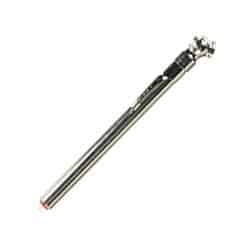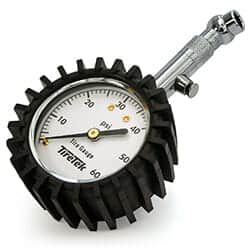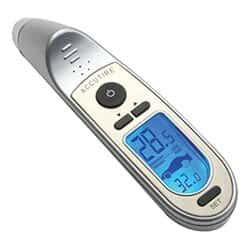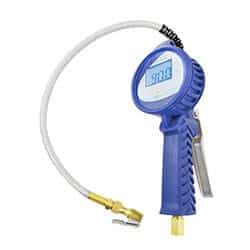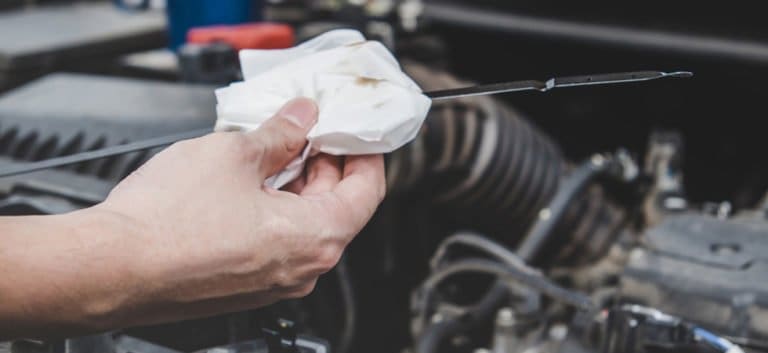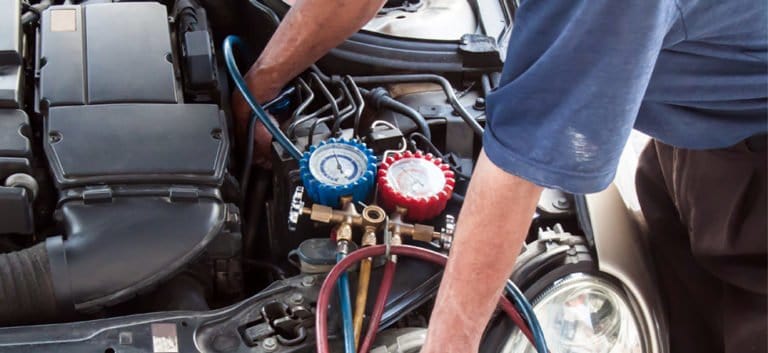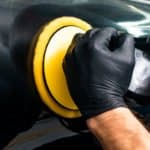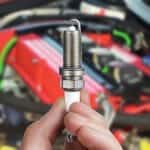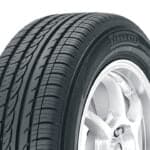Affiliate Disclosure: Some of the links in this post are affiliate links. As an Amazon Associate, we earn from qualifying purchases. Read more in our affiliate policy.
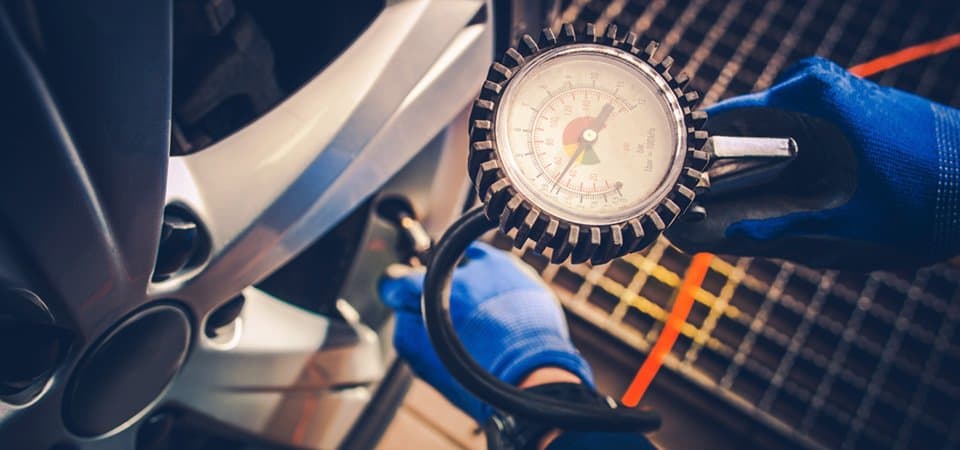
How To Check Tire Pressure: The Ultimate Guide
Tire pressure is not something that will pop out of your mind more often than fuel. Yet, the correct tire pressure earns you better mileage and prevents accidents.
Most drivers realize low pressure on their tires when it’s too late or when they are on a long journey.
- Why Is Tire Pressure Important
- What Is PSI: Explanation
- How To Check Your Tire Pressure
- Step 1: Check the tire first thing in the morning
- Step 2: Use a good tire gauge
- Step 3: Set the gauge
- Step 4: Inflate the tire
- Step 5: Recheck
- The Dangers Of Low Tire Pressure
- How Often Should You Check Tire Pressure
- Nitrogen Vs. Compressed Air In The Tire: Which One For You?
- FAQ About Tire Pressure
- Bottom Line About Checking The Tire Pressure
Things don’t have to be this way. Let’s start by first understanding:
Why Is Tire Pressure Important
Keeping your car tires inflated has many benefits. Your tires can wear evenly, prolong their life, and improve fuel economy.
Appropriate inflated tires give you better steering, comfortable ride, and excellent traction.
Here’s what you need to remember during tire inflation:
- A car tire needs to be inflated to their respective PSI (the Standard Rating for air pressure within your car tire). Find that number on your car manual or door.
- Ensure to check the air pressure every morning before driving. You won’t get a correct reading after you have driven the car.
- Temperature difference affects the pressure. A car’s tire pressure drops when it’s cold and rises when it’s warm. Always check the tire pressure when the season changes.
- Ensure your car has a tire pressure monitoring system (TPMS) that alerts you when the pressure is low.
- Over-inflated tires are stiff and rigid, reducing the tire’s contact surface. And this contributes to uneven wear (see the diagram below).
- Under-inflated tires become flat, causing premature shoulder wear on the tires. Worst still reduces the lifeline of the tire.
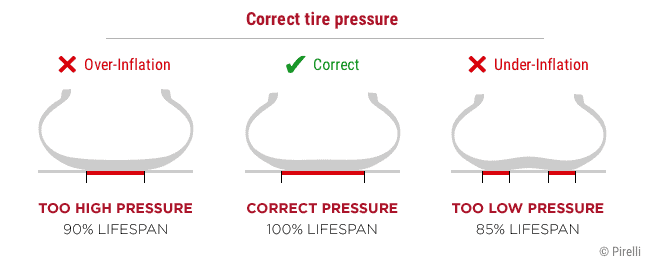
A correctly inflated tire gives you excellent gas mileage and saves you money. Most importantly, you can avoid accidents and blowouts.
What Is PSI: Explanation
PSI or pounds per square inch is the imperial system of measuring car tire pressure. The pound measures weight or force per square inch measure the area.
Therefore we can define it as the amount of force in a given area. PSI measures gas pressure (pneumatic pressure), hydraulic pressure, and tensile strength.
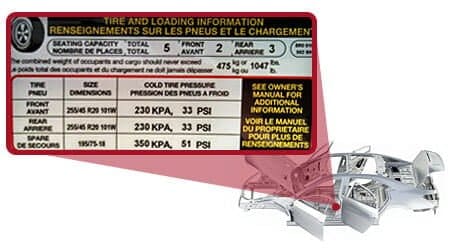
You can increase the pressure of the object using two ways:
- Raising the temperature of the atoms of the object
- Putting more atoms into the object
When you fill the up the car tires or bike tires, you pump to increase the pressure inside. That way, you can increase the number of atoms in the tire.
An average car tire runs at 30 PSI and a bike tire from 60 to 100 PSI.
How To Check Your Tire Pressure
Step 1: Check the tire first thing in the morning
For an accurate reading, check the tire first thing in the morning or when it’s cold. Outside pressure varies.
The car tires are black. Black attracts heat; that’s why it is a bad idea to ask to check your car tires during the day or when driving.
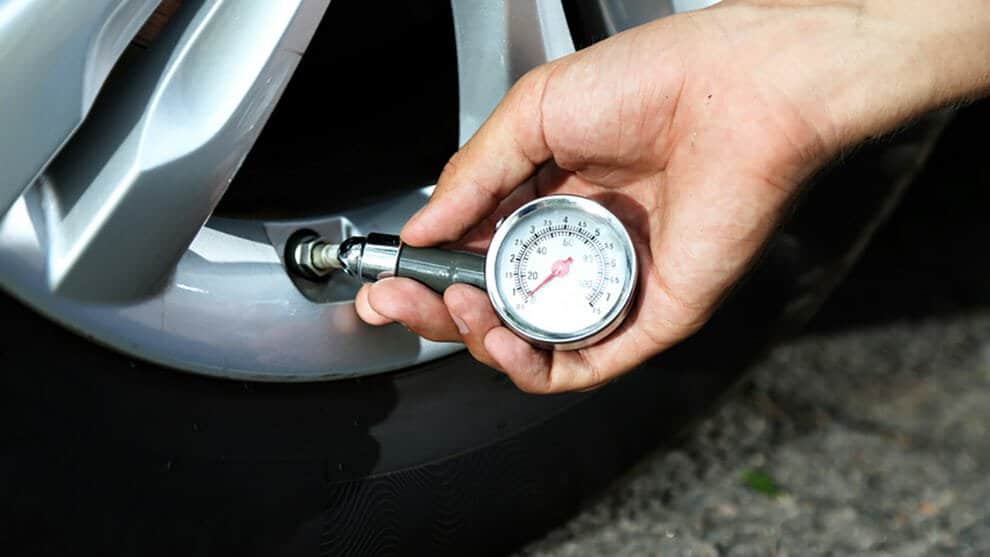
Step 2: Use a good tire gauge
Use a good tire gauge to check the ideal pressure. In the market, you’ll find different gauges like stick gauge, dial gauge, and digital tire gauges. Don’t depend on the ones at the gas station because they do have an inaccurate reading.
Step 3: Set the gauge
Open the valve cap on the tire. Press the gauge on the valves and wait for the accurate reading on the screen.
Step 4: Inflate the tire
Inflate the tire. Now that you have the accurate reading. Add enough air pressure to achieve the manufacturer’s recommended tire pressure. In case you put too much, push the metal stem to release the air. When done put the valve cap at the back on the tire.
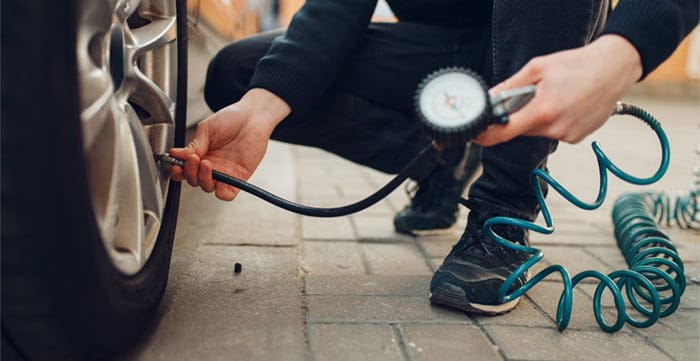
Step 5: Recheck
Recheck the tire pressure using the digital gauge. If you find the air pressure to be too high, press the gauge to release some air. Then check again.
For example
When the recommended level is 35 PSI. And when you check the tire and find that it is 29 PSI. You have to bring the pressure to the exact PSI.
Why?
For every 3 PSI below the recommended PSI, it cost you 1% more fuel and 10% more tire wear.
The Dangers Of Low Tire Pressure
Blowouts
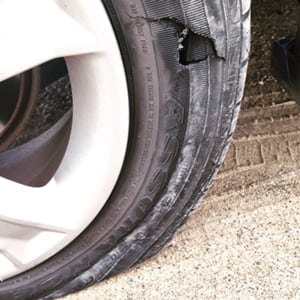
A blowout is a tear in the tire that causes rapid air loss or bursting of the tire. In the event of a blowout, your car can veer into another lane, causing an accident.
If you are on a high speed, your car can spin. A blowout causes unstable steering, and it may make you lose control of the car.
Large vehicles such as vans and SUVs can rollover fast when a tire blows out. The NHTSA data shows that blowouts are responsible for 41 deaths and 1,028 injuries per year.
Hurts Fuel Economy
Low air pressure consumes lots of fuel. That’s because under-inflated tires roll quickly than inflated tires.
Picture it this way:
A properly filled bike is easy to pedal. But a bike with low air pressure, it is hard to pedal; in fact, you use more energy.
Same way with a car. It takes more energy to move the tires when the pressure is low. The extra grunt comes when the engines work twice as hard, which consumes more fuel.
Low Air Pressure Affects Steering
Steering on a low air pressure tire is challenging. With under-inflated tires, the sidewalls flex more when cornering and braking.
There’s less stability on the tires and less traction. The response also is slow and sloppy. Worse still, the braking distance lengthens.
That means, in the event of an emergency, your car’s response rate and cornering will be low. In other words, a low tire pressure robs you the grip and responsiveness you need to avoid accidents.
How Often Should You Check Tire Pressure
Check the air pressure every month. You need to check when the car is stationary for several hours because during that time it will be cold.
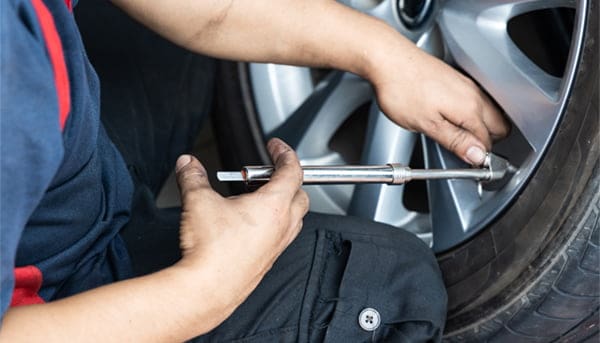
Nitrogen Vs. Compressed Air In The Tire: Which One For You?
The most car uses compressed air pressure until recently when tire retailers started using nitrogen in their tires. There’s a huge difference between Nitrogen and compressed air.
Nitrogen
Nitrogen is dry air without oxygen, and it is mostly used in race cars and airplanes. The user of nitrogen depends on so many factors, best of all the kind of driver. The advantage of nitrogen is, there’s less air escape, and inflation pressure stays for longer.
Most importantly, it keeps the car tire in good shape for a long. Nitrogen will be a better option for someone or a driver who doesn’t want to check their air pressure regularly.
The second air consists of 78% nitrogen and 21% oxygen. Oxygen retains moisture inside the car tire. The humidity inside causes premature tire aging and rusting of the tire wheels reinforcing belts.
Nitrogen, on the other hand, doesn’t support oxygen. That means chances of wheel corrosion and premature tire aging are low.
What about compressed air?
There’s nothing wrong with using compressed air. Drivers use it often. The only advantage of compressed air has is that it is readily available. Drive into any gas station. You won’t miss compressed air. Best of all, it is cheap compared to nitrogen.
Nitrogen will cost you around $70 to $100 while compressed air is free. Compressed air is a clear winner when it comes to convenience.
Can the two Mix?
Yes, they can. There’s no chemical reaction, but the nitrogen won’t be useful.
FAQ About Tire Pressure
What Is The TPMS( Tire Pressure Monitor System)
An electronic system monitors air pressure and alerts you when it is low. The system has a pressure light on the dashboard that shows you when it’s low or high. Most vehicles made after 2006 have TPMS.
Can I See When My Tire Pressure Is Low?
You can’t judge the tire pressure using your eyes unless the pressure is very low and it’s obvious. The tire can be 50% inflated, and you won’t notice with your eyes — all you need it to gauge or an accurate tire gauge.
Do Original Equipment (O.E) Tires Have A Mileage Warranty?
The tires are designed according to the manufacturer’s specifications. There’s a mileage warranty depending on where you buy the tires. Some manufacturers will indicate that on their tire’s specification others will not. The typical millage will range from 30,000 to 100,000 miles.
Why Did The Tire Wear Quickly?
They are many factors that contribute to this besides tire rotation. It can be improper inflation, driving conditions, misaligned vehicles. You need to inspect the tires for you to know.
How Often Should You Rotate Your Tire?
Rotation is crucial because car tires carry different weights, which affect the rate at which they wear. Rotating the tires even out the different wear rates.
As a rule of thumb, stick to your car’s manual which states rotation should be done after 5,000 to 8,000 miles. Sometimes you might rotate them soon if you see signs of uneven wear. Always consult your mechanic to determine the cause of the wear.
Bottom Line About Checking The Tire Pressure
Never get lazy to check your tire pressure. Make sure you do it often the first thing in the morning or once a month.
Or, you can avoid constant checking by using nitrogen instead of compressed air. A well-inflated tire will give you better steering, exceptional mileage, even wears, and tears.
Best of all, you will save more on fuel.
Stay tune and keep reading our blog!
Disclaimers
All product names, logos, and brands are property of their respective owners. All company, product and service names used in this website are for identification purposes only. Use of these names, logos, and brands does not imply endorsement.
It is our policy to make every effort to respect the copyrights of outside parties. If you believe that your copyright has been misused, please provide us with a message stating your position and we will endeavor to correct any misuse immediately.
Some of the links in this post are affiliate links. As an Amazon Associate, we earn from qualifying purchases. This means if you click on the link and purchase the item, we may receive an affiliate commission, at no extra cost to you. This helps us keep this website alive. Read more in our affiliate policy.
